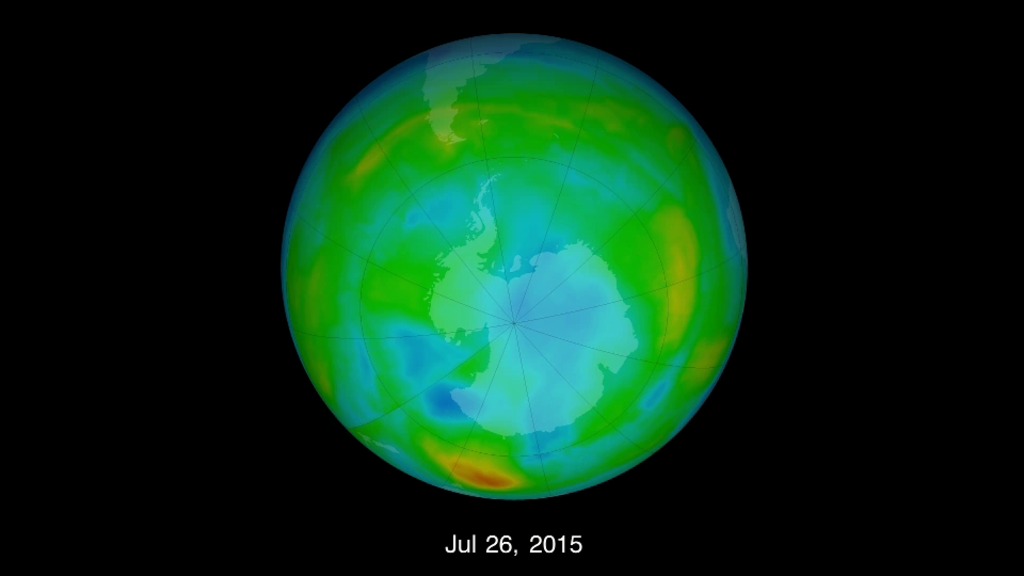Bigger and Later

The 2015 Antarctic ozone hole was one of the largest and latest forming holes in recent years.
Since the early 1980s, scientists have observed a hole in the ozone layer that forms and expands over Antarctica in August and September during the Southern Hemisphere spring. But NASA satellite measurements show this year’s ozone hole area was larger and formed later than in recent years. On October 2, 2015, the ozone hole expanded to its peak of 10.9 million square miles, an area larger than the continent of North America. Scientists say the unusual timing and size of this year’s hole is due to colder than average temperatures and high levels of ozone-depleting compounds in the atmosphere. The compounds are mainly derived from man-made chemicals that steadily increased in Earth’s atmosphere up through the early 1990s. Since 2000, levels of these chemicals have slowly declined as a result of the internationally agreed-upon Montreal Protocol, which has regulated ozone-depleting compounds beginning in 1987. Although this year’s hole is on the larger side, scientists expect the ozone hole to recover back to 1980 levels by 2070. Watch the video to learn more.
Watch this video to find out more about the conditions that led to the timing and size of this year's ozone hole.

This image from NASA’s Aura satellite shows ozone concentrations over Antarctica on Oct. 2, 2015, the day the hole reached its max size.

At 10.9 million square miles, this year’s ozone hole is larger than any observed in the past five years.

The Aura satellite, launched in 2004, collects data that allow scientists to continually monitor the state of Earth's ozone layer.
For More Information
See NASA.gov
Credits
Please give credit for this item to:
NASA's Goddard Space Flight Center
-
Writer
- Audrey Haar (Telophase)
-
Producer
- Sophia Roberts (USRA)
-
Scientist
- Paul Newman (NASA/GSFC)
-
Narrator
- Sophia Roberts (USRA)
Release date
This page was originally published on Thursday, November 19, 2015.
This page was last updated on Wednesday, May 3, 2023 at 1:49 PM EDT.
